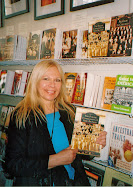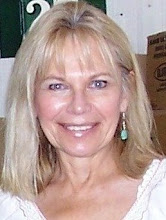Note: I translated these entries from Slownik Geograficzny Krolestwa Polskiego in the late 1990s. Edited by Fred Hoffman, they were first published in the Polish Genealogical Society of America Summer 1998 Bulletin, and now appear on the PGSA Web site as well.
Szczuczyn [now Scucyn, Belarus] called Szczuczyn Litewski, "Lithuanian Szczuczyn," a town on the Szczuczynka river, in Lida powiat, in the 3rd political district, center of a gmina and rural district, at 53 degrees 36' north and 22 degrees 18' east, on the mail route from Wilno to Grodno, a distance of 52 km. southwest of Lida [now in Belarus] and 146 km. from Wilno [Vilnius, Lithuania].
It has 123 houses, 1,088 inhabitants (as of the year 1866), an Orthodox parish church of brick, a Catholic church, a Jewish house of prayer, a parish school (78 boys and 6 girls in 1885). It is the site of the headquarters of its political administrative district and of its gmina, and has a pharmacy, a post office, a market every Sunday, and fairs on August 15 and October 16.
The Catholic parish church of Jesus Christ was built of brick in 1829 by Prince Drucki-Lubecki. Before that there was a Catholic church in Szczuczyn made of wood, St. George's, which eventually fell into ruin. The Catholic parish, in the deanery of Lida, has 2,057 faithful. It had a chapel in Jatwisk.
The Orthodox parish, Szczuczyn deanery, has 901 faithful. The Orthodox deanery of Szczuczyn [the exact term is blagoczynia, in the Orthodox church a provostry], comprises 10 parishes: Szczuczyn, Dziembrowo, Dzikuszki, Glebokie, Orla, Ostryna, Rakowiec, Sobakince, Turejki, and Wasiliszki, and it includes 10 Orthodox churches, 9 chapels, and 25,795 souls.
The gmina belongs to the 2nd district for peasant affairs, 2nd conscription district, and the 2nd judicial district, consisting of three rural districts (Szczuczyn, Krasne and Iszczolno), with 56 inhabited localities, 412 homesteads, and 6,596 peasant residents. The rural district includes the town of Szczuczyn and the following villages: Bale 1 and 2, Bartosze, Bujwicze, Dogi, Dubrowlany, Gierniki, Kulaki, Lack, Micary, Murawiowka, Nowosiolki, Ogrodniki, Planty, Podgajniki, Rogacze, Rzeszotniki, Topoliszki, Turowka, Worony, Wyzgi, Zaguny, Zarzecze, Zylicze, and the colony of Turya, for a total of 836 souls as of the year 1865, according to the rewizja [census].
Szczuczyn formerly belonged to the Scypio family, who, according to Balinski (Star. Polska, III), supposedly endowed a Piarist college and founded schools there. A 1726 resolution confirmed the Piarist college in Szczuczyn, and gives the name of its founder as Hlebicki-Jozefowicz, Polock wojski. The Piarists settled near the parish church, and, with the permission of the episcopal consistory, took possession of the secular priests' parsonage with all incomes and buildings.
The Piarist college in Szczuczyn was quite prominent, and supported a Piarist seminary and academies, in which even Oriental languages were taught. In the year 1755 the college president was Lukasz Rosocki, professor of oriental languages. The other professors were: Kanty Wykowski, history; Jozef Szaniawski, theology; Eustachy Kurowski, moral studies; Wincenty Kloss, natural history; Jozef Ketrzynski, logic and metaphysics; and Wojciech Komorowski, elocution and poetry.
In the year 1742 Teresa Scypio, née Hlebicki-Jozefowicz, the wife of the castellan of Smolensk, established a congregation of the Sisters of Charity there and founded a hospital. The educational committee for organizing national schools elevated the Szczuczyn school to the rank of subfaculty [podwydzialowy] with three classes. After the Scypios, Szczuczyn was transferred to the princes Drucki-Lubecki, in whose possession it remains to this day. — J[ozef] Krz[ywicki].
Gierniki
Gierniki, a peasant village and private manor, Lida powiat, 3rd administrative district, about 7 km. from Szczuczyn. In the year 1866, the village had 16 houses, 142 inhabitants; the manor had 11 inhabitants.
 These vintage postcards show the Szczuczyn rynek, or marketplace. In that era, the weekly market would have provided a major opportunity for villagers and city residents alike to socialize as well as do business. When I look at the crowd on market day, I wonder if anyone from my family is in that photo.
These vintage postcards show the Szczuczyn rynek, or marketplace. In that era, the weekly market would have provided a major opportunity for villagers and city residents alike to socialize as well as do business. When I look at the crowd on market day, I wonder if anyone from my family is in that photo.










No comments:
Post a Comment